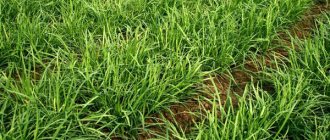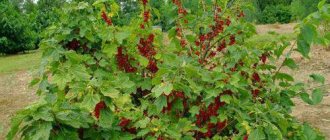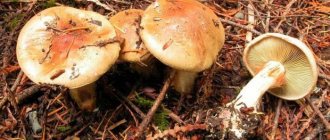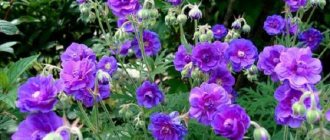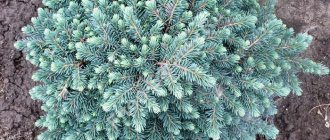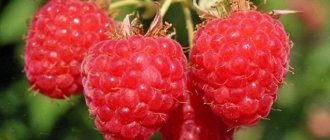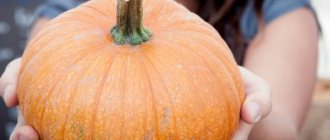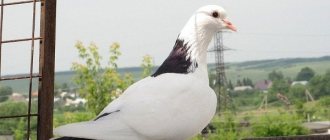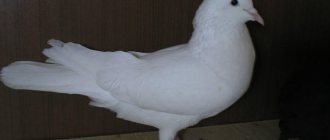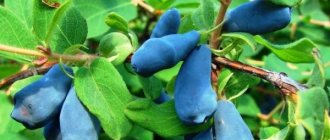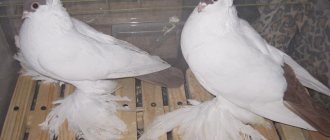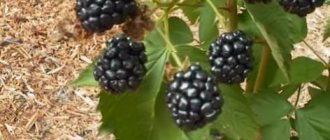Description of the bird and its features
Wild wood pigeons are dominated by their excellent plumage color, attracting attention with a gray-bluish tint. This coloring is a unique opportunity to hide from predators. Behind the camouflage, enemies do not see the pigeon, and therefore it has a greater chance of remaining unnoticed. The plumage on the chest is red, on the neck it is greenish with a metallic tint. In the sun, bird feathers glow incredibly beautifully.
Compared to its urban relatives, the wood pigeon is much larger. The body length to the tail is more than 40 cm. Their weight can reach more than one kilogram. There were also individuals weighing one and a half kilograms.
The birds have a small, ashy-colored head. On the muzzle there are round black eyes. The rim around the pupil is yellow. A curved red beak at the base with a sharp yellowish tip. The head is located on a gracefully curved neck with a metallic tint; there are two distinctive white spots on the sides of the plumage.
Pigeons have a small tail, which opens during flight, thereby revealing a white transverse stripe. The wingspan in flight reaches 80 cm. When the bird flies, beautiful white stripes can be seen crossing the wings crosswise. The large wingspan allows it to reach up to 180 km/h. Seasonal migrations are not scary for wood pigeons - they are able to cover distances of up to 1000 km without stopping.
The body is located on thin paws of a pinkish-red hue. Sharp claws allow the bird to easily grab onto branches.
In the first weeks of life, the plumage of the chicks bears little resemblance to an adult pigeon. The babies are predominantly dirty gray in color. Only with age do the chicks become attractive and interesting.
Origin of the species and description
Photo: Wood Pigeon
Columba palumbus is the Latin name for this bird from the pigeon family. "Columba" is an ancient name for pigeons in Ancient Greece, derived from the Greek word meaning "diver" and given for the custom of some members of the genus to throw themselves upside down in flight. The etymology of the word “palumbus” is not very clear, but it seems to also mean “dove”. Wood pigeon and vityuten are the popular names for this species, the history of which is hidden in the darkness of time.
Video: Wood Pigeon
There are a number of subspecies, or geographical races, which are distinguished by color and size of the white spot on the neck:
- the type subspecies lives in Europe, Siberia, and northern Africa;
- the Azores subspecies (C. p. azorica) from the Azores archipelago is the darkest and brightest;
- Iranian subspecies (C. p. iranica), lighter than European pigeons;
- subspecies Kleinschmidt (C. p. kleinschmidti) described from Scotland;
- Asian subspecies (C. p. casiotis, C. p. kirmanica) – homeland of the Himalayas, spots on the neck are narrow, yellowish;
- the North African subspecies (C. p. excelsa) is practically no different from the European one;
- subspecies Gigi (C. p. ghigii) lives on the island of Sardinia.
There are 33–35 species in the genus. In the modern sense, only pigeons of the Old World belong to it, with the exception of the once imported sisar. Pigeons of this group appeared in the late Miocene 7 - 8 million years ago and clearly had a common ancestor with the American ones, who lived either in the New or Old World - scientists have not yet come to a common conclusion.
Vocal qualities and behavior
Even at dawn, the wood pigeon begins to make characteristic loud sounds “kru-kuu-ku-kuku”. Pigeons make energetic flights, emitting a sharp whistling sound with their wings. During breeding, birds of this breed behave secretly, hide in the foliage of trees and become silent if they hear animals or humans approaching.
The pigeon feeds in the same area, not far from the nest. It behaves warily during migration, usually stopping in landscapes where it is difficult for other animals to get through.
Reproduction and sexual behavior
Immediately after returning from wintering, flocks of wood pigeons have a very complex composition. They include ready-made married couples and many bachelors. However, after a few days, the flock breaks up, all individuals split into married couples, starting nesting.
The ritual of sexual behavior among wood pigeons is similar to the actions of the rock pigeon. First, the males find nesting sites, where they begin to vigorously display. Moreover, they display in their own areas, including males who do not yet have their own female.
What do you call this behavior? Indeed, in the absence of the female, all these dances and specific singing do not resemble a mating ritual. And yet he is. Simply, if the male manages to retain his territory, the females, free from matrimony, will definitely fly to such a suitor. Moreover, in addition to booming songs and mating, males often defiantly fly up to meet flying females, inviting them to settle in his area.
After a pair has formed, the pigeons begin to build a nest. The male chooses the place for this. Usually the nest is located in the upper or middle tier of the forest.
After construction is completed, the female lays 1 egg; after laying 2 eggs, the incubation process begins. Both spouses incubate alternately. However, the female sits on the eggs longer because the male has one more duty - to guard the nest.
Thus, the wood pigeon exhibits a wide range of adaptive reactions. This affects both food specialization and the choice of nesting sites. For this reason, the range of this bird includes such a wide variety of biotopes. This helps populations of such a large bird remain sustainable, counteracting unfavorable environmental factors.
Population status and conservation
The wild wood pigeon is a creature that likes order and silence. It would seem that urbanization leads to a reduction in the rural population, due to which there would be silence in the forest. But due to the significant development of hiking and automobile tourism, pigeons are leaving the habitats to which they are so accustomed. Wild pigeons have almost stopped populating the suburban forests, which are visited by mushroom pickers almost the entire summer.
The number of birdtails began to decline since the late 40s of the 20th century, the reason for this was the use of pesticides in agriculture - large quantities of them led to the death of the birds. Today, the bird population is no less exterminated by hunters; for them, hunting wild pigeons is a gamble. The wood pigeon easily flies away, even if the hunter hits it, so it is not so easy to find the killed bird, and this leads to the fact that the hunt continues.
A subspecies of wood pigeon lives in the Azores - Columba palumbus azorica, included in the Red Book. It inhabited the forests of all the major islands of the archipelago, but today is found exclusively on the islands of Pico and São Miguel. Another subspecies of wood pigeon that settled on the Madeira Islands, Columba palumbus maderensis, was destroyed at the beginning of the last century.
Varieties of Vityuteni
The pigeon species is represented by a huge number of subspecies, many of which have already been destroyed by humans, and some are listed in the Red Book. Below you can get acquainted with some of the not yet extinct representatives of the Vityutnaya:
- The Azores wood pigeon is a representative of the archipelago of the same name and previously lived on most of its islands, but is now listed in the Red Book and is considered endangered - its representatives can only be found on the islands of San Miguel and Pico (oddly enough, in San Miguel you can still hunt this bird);
- The Asian wood pigeon (ringed dove) originally lived in the vastness of Asia, and 400 years ago, according to ornithologists, it began to expand its habitat area. The pigeon focuses on human settlements, which allows it to feed in winter and summer without wasting energy on long flights;
- The wood pigeon of North Africa (speckled pigeon) grows up to 40 cm in length, weighing no more than 400 grams, and has white triangles on its wings, which from a distance look like white dots. It feeds on cone seeds, grain crops and nuts. The habitat is located in the vastness of Senegal to Somalia;
- Iranian wood pigeon (lives in Iran) - a peculiarity of this bird is the height of its flight; sometimes individuals rise so high that they become inaccessible to the human eye. All Iranian species are similar to each other, but differ in weight and physical characteristics.
In nature, unfortunately, it is very difficult to meet the vituten, but in large zoos there are entire families of such pigeons, and any guest can see enough of this rare bird.
pigeon
Lifestyle and duration
Like most wildlife, pigeons prefer to be on the safe side. The reason for this is that wood pigeons are helpless in front of large predators. But what helps them avoid danger is the ability to develop flight speed. If there is a predator nearby, the pigeons become silent and freeze, thereby not giving themselves away. And the bird’s wingspan can alert the animal that a wood pigeon is nearby, because loud sounds reminiscent of a whistle are heard when flying.
Birds don't like people either. They prefer to build nests no closer than 2 kilometers from human settlements. But there are such specimens that settle very close to people, but still you practically cannot find them in large cities. They like remote forests - there they feel comfortable, safe, and have the opportunity to raise their offspring.
Wood pigeons behave energetically among themselves and are sociable. They have large flocks; the number of birds can reach more than two dozen individuals.
Under favorable living conditions, wild forest pigeons can live up to 16 years.
Appearance and features
Photo: What a wood pigeon looks like
The wood pigeon differs well from other pigeons in size and color. This is the largest of the domestic pigeons: the length of the male varies from 40 to 46 cm, females from 38 to 44 cm. The male weighs 460 - 600 g, the female is slightly less. The body is elongated, streamlined, with relatively short wings and a long tail.
Sexual dimorphism in color is practically invisible. The outfit of both sexes is done in dove-gray, sometimes bluish tones. The underparts of the body, as well as the undersides of the wings, are lighter blue, which is clearly visible in flight. On top of the outstretched wings there is a white stripe, which is emphasized by the dark brownish color of the upper coverts and almost black flight feathers.
The tail feathers are dark at the tips. On the sides of the neck there are clear white spots, like the border between the bluish head and the bluish-purple crop and chest. Males have slightly larger spots than females. And, of course, there is a trademark of the depths - the iridescent iridescence of the neck, which is especially pronounced in males. The beak is orange with a yellow tip, the legs are pink, the eye is light yellow.
Young pigeons are more red, without spots on the neck and a metallic sheen. The beak is brown with a white tip. The vityuten flies quite well for a pigeon, at least it can make seasonal flights, which our city sisar is not capable of. Moving away from the hunter, it makes sharp turns in the air. When taking off, it flaps and whistles loudly with its wings. He walks like all pigeons with small steps and jerking his head. Clings tenaciously to branches and wires. The screams are hoarse and howling. Life expectancy is 16 years or so.
Nutrition
The basis of the pigeon's diet is plant food. Only very rarely can birds eat animal food. They sometimes consume caterpillars or earthworms. They prefer grain crops, wild grains, and legumes. However, they can eat all the grains that they find on the ground.
The food preferences of the wood pigeon depend on its habitat. If a pigeon lives in a coniferous forest, it will happily eat tree seeds. As vegetation changes, food preferences also change. The wood pigeon loves to feast on beech fruits and acorns from oak trees. It will not fly past strawberries, blueberries, viburnum, lingonberries.
Birds of this breed tend to store food - they put food in a fairly capacious crop (about eight acorns fit in it). The bird picks up its food from the ground; the pigeon likes to pluck low plants.
If the wood pigeon lives in dense forests, then it picks fruits from the trees directly in flight. Able to peck even young buds. Long wintering often exposes the bird to feeding on clover and cabbage leaves. Due to the fact that the vityutna's diet is varied, it can take root in almost any area.
What does a wood pigeon eat?
Photo: Pigeon bird
The wood pigeon can eat everything that a pigeon can eat and even more. Pigeons tend to collect food from the ground, but the wood pigeon is an exception. It can pick edible parts of plants while walking on the ground and sitting on tree branches.
His diet includes:
- seeds of cereals, legumes, cruciferous plants, asteraceae - the main part of the menu. Including mature and fallen grains of peas, cereals, buckwheat, hemp, sunflower;
- green food in the form of winter seedlings, as well as juicy young leaves of wild, field and garden crops, often rapeseed and cabbage;
- juicy fruits (honeysuckle, blueberry, lingonberry, elderberry, bird cherry, rowan, blueberry, currant, mulberry, rose hip, grape);
- nuts, acorns, beech, pine and spruce seeds;
- buds, which are eaten in winter and spring;
- insects and molluscs;
- food waste in garbage dumps in populated areas.
Like many granivores, the wood pigeon swallows pebbles - millstones for grinding grains. Their weight can reach 2 g. In one sitting, a pigeon can absorb 100 g of wheat, or 75 g of acorns. The prevalence of one or another component depends on the conditions - the more cultivated the area, the more gifts from the fields in the pigeon menu. Can you blame him for this? Moreover, he does not always spoil the crops; he mainly collects what remains in the fields after harvesting. By this time, the chicks are just growing up, and the birds fly in flocks to the mown fields to gain strength before the flight. Then it's time to hunt.
Reproduction
Within one year, the wood pigeon is capable of bearing offspring three times. The breeding process usually begins in April. During this period, birds return after wintering. Reproduction lasts until the end of the first autumn month.
How do pigeon pairs form?
Pigeons reach sexual maturity at 10-11 months from birth. It is at this moment that to attract females, males sit on the tops of trees and begin to coo loudly. They usually start their day with this, since they are used to making such sounds in the morning.
After the female pays attention to the pigeon, it descends and circles around her, never stopping cooing. Such mating games subsequently lead to the laying of eggs.
Arrangement of the nest
Before hatching the eggs, the vitiutni will equip a suitable nest. They take the issue of arrangement very seriously. Before taking a twig for construction, birds carefully tap it with their beaks, as if testing it for strength. Only after the bird is convinced that the quality of the material is suitable will it take it to build a nest.
What is especially impressive is the speed with which wood pigeons equip their nest; construction takes only a few days. They create a strong frame using thick branches, with more flexible, small branches woven between the rods. As a result, it is possible to obtain a nest with a flat bottom and a loose cocoon with several holes that appear between the branches.
Pigeons place their nests at a height of no more than two meters from the ground. Only lazy pigeons can use the remains of the nests of other birds, for example, falcons, magpies, crows.
Hatching eggs
Typically, the female lays two white eggs during one oviposition. They are small in size. Birds hatch eggs for two weeks. In this case, both parents take an active part in incubation. After the chicks hatch, the babies are fed exclusively on pigeon milk - a curd-like secretion accumulated in the parents' crops. Then they begin to eat other types of food typical of adult birds.
Care of offspring
Wood pigeons are quite caring and rational parents. They feed their chicks and teach them the intricacies of flight. After 1.5-2 months, the chicks become completely independent and can take care of themselves.
Features of character and lifestyle
Photo: Wood Pigeon
These pigeons are typically forest birds that quietly hide in the treetops during the breeding season. During this period, only the mating of males and the squeaking of chicks can indicate their presence. The nature of the birds is very cautious; if disturbed, they can abandon the nest with laid eggs. On the other hand, in a calm environment, wood pigeons get used to the company of people well and can live in cities. They mostly live in pairs, but neighbors can meet near the water or in feeding areas, which happens most often in the morning and before sunset. Having hatched the chicks, they gather in flocks, which are especially large in the fall.
The birds permanently reside only in the southern parts of the nesting range; they fly away from the north for the winter, or rather move to the south. For example, Crimean pigeons fly to southern Europe, and northerners arrive in Crimea for the winter. Departure occurs at different times, starting from September (Leningrad region) and ending in October (Volga delta), but in any case, the departure of all flocks takes more than a month. The return occurs again in different ways. In the southern regions, birds appear from the beginning of March, in the northern regions - in April - early May.
Migrating birds move mainly in the first half of the day; for overnight stay they choose a forest area with tall trees and a good view. They are seated only after a thorough security check, for which they make several circles over the area. On the way there and back, they use the same routes, but behave differently. In the spring they rush all day long without stopping, and during autumn migrations they stop to feed in fields of winter crops, cabbage, fields with compressed grains, in oak forests and on the edges. Wintering birds stay in flocks and are busy sweeping away everything edible from the fields.
Interesting fact: While stuffing crops in the fields, pigeons do not lose their vigilance. Therefore, they prefer to feed among low-growing crops, no higher than the knee, or in low stubble. To demonstrate the safety of the site, hunters plant stuffed crows and pigeons on it. At the same time, for greater persuasiveness, a whole set of stuffed animals is required, depicting feeding, guarding and sitting individuals.
Wood Pigeon Hunting
Wood pigeon hunting is a sporting event, exciting and exciting. The only thing that interferes with this matter is the natural caution of birds. But on the other hand, it is precisely this feature that gives hunters intense interest, igniting in them passion and a greater desire to get a trophy pigeon.
The hunter must be restrained, patient, careful and at the same time cold-blooded. In the spring, in permitted areas, it is possible to hunt wild pigeons using decoys. At the same time, experienced hunters copy the voices of birds, luring them into their “nets.” In the summer, a stuffed animal is most often used for hunting. This is an equally common bait for birds. An artificial bird (similar to a wood pigeon) can be purchased in specialized stores or made independently.
Real vityutni, accustomed to living in flocks, at the sight of their “brothers”, gladly fly up and sit next to them, which is why they fall right into the hands of experienced hunters. It has been noticed that the more stuffed animals are used for hunting, the more pigeons will fall for such bait.
In Russia it is prohibited to use air guns when hunting wild pigeons. But some violators disregard the law and use pneumatic guns to catch birds.
Features of behavior
The wild pigeon appears in central Russia around the end of March, and in October (in some areas even in September) it flies away. This bird winters on the shores of the Mediterranean Sea, in some southern regions of Europe, and less commonly in Kazakhstan and Central Asia. Many birds move in winter to Algeria and Morocco, where there are already local individuals of this species. So if an ordinary rock pigeon living in an urban environment rarely leaves its home for the winter, then the vitiuten is one of the migratory birds.
Natural enemies of Wood Pigeon
The most dangerous predator for the forest wild pigeon are birds of prey. Pigeons suffer not only from falcons and hawks, but also from jays, squirrels, hoodies, and magpies - they destroy pigeon nests and destroy eggs. The marten, which is able to move freely among the treetops, also hunts pigeons.
Since wood pigeons are characterized by their large mass and large body size, they cannot take off too quickly. When planted on the ground they often become food for badgers and foxes.
Vityutni suffer greatly from people, because of which the number of birds is significantly reduced. Some people believe that wood pigeons harm trees and therefore destroy birds.
Wood pigeons are wood pigeons, although wild, but not dangerous to humans. The external characteristics of the birds are especially surprising: they are quite large, but fast: sensing danger they immediately hide. Birds are able to camouflage themselves well. They take care of their offspring, feeding and training the chicks themselves.
0
0
Copy link
Social structure and reproduction
Photo: Pigeon birds
The dove is a faithful bird and forms long-lasting pairs. Already established spouses fly from wintering in pairs to a familiar site, and young people find their halves on the spot. A single male slaughters a plot and talks about his rights to it. The wood pigeon's love song resembles a hoarse howl, which can roughly be described as goo-goo-goo.
A dove sings at the top of a tree, periodically flies up, hovers and glides down. Before reaching the tree, it rises again and so on several times. Seeing the female, he flies up to her and plans to return to the site, inviting her to join. The marriage ceremony is accompanied by deafening coos and bows with a spread tail. If the female agrees, she makes a sign for mating. Wood pigeons kiss little and coldly.
The couple chooses a place for the nest in a fork in the branches or on a horizontal branch at a height of 2.5 - 20 m. The male collects twigs, and the wife builds a nest from them that looks very much like a crow: a pile 25 - 45 cm in diameter with a depression in the middle. She then lays two eggs and both parents begin to incubate them. This happens at the end of April or beginning of May. If possible, they make the second brood in mid-summer.
Incubation lasts 17 days. This is followed by a feeding period of 26 - 28 days, in which both parents again participate. The first days they feed goiter milk several times a day, then only in the morning and evening, but with a mixture of grain and milk. Starting at three weeks of age, the chicks begin to leave the nest for the day, returning in the evening. But having flown out completely, they remain dependent for several more days, receiving food from their parents. Only after a month do they become completely independent.
Interesting fact: The male's day is scheduled as follows: mating in the morning takes 4.2% of the time, breakfast - 10.4%, mating during the day - 2.8%, cleaning feathers - 11.9%, incubation - 22.9%, dinner - 10.4%, feather cleaning - 4.2%, mating in the evening - 6.2%, sleep - 27%. The female’s schedule looks like this: breakfast - 10.4%, cleaning - 8.3%, dinner - 4.2%, incubation + sleep - 77.1%.
Wood pigeon feeding
Wood pigeons living in the vicinity of pine forests and oak groves feed on cones, spruce seeds and acorns. Birds find them on tree branches and collect them from the ground. Whole flocks of wood pigeons flock to feed in places rich in food suitable for them, and, as a rule, birds, having chosen one suitable place, prefer to return there again.
For food, the wood pigeon uses legumes, various fruits, nuts, herbs, as well as seeds of a wide variety of plants, of which it most readily consumes wild grains; In addition, he enjoys berries: lingonberries, blueberries, blueberries. The crop of these birds is extremely voluminous and can accommodate a whole dish of grains and up to seven acorns.
Wood pigeons peck beech nuts directly from the bushes. Large plants are usually not touched, but small ones can be literally plucked out on the vine. Animal food, which is extremely rare in the diet of birds, includes earthworms and caterpillars.
The weakness of wood pigeons is grain grains, which sometimes creates a lot of trouble for the human race. And after harvesting in the fields, many birds flock to places where wheat and other cultivated grains are grown in order to profit from what is there, flying around the sheaves and collecting their favorite delicacy from them.
Pigeon: distribution
Vityuten lives in temperate latitudes of Europe and Asia, and is also common in the northern part of West Africa, where northern individuals fly for the winter, and locals live permanently. In Russia it has never been seen north of the sixty-second parallel, both in the European part and beyond the Urals. The habitat is limited to the south by the fifty-second parallel (to the borders with Ukraine).
It settles most often in coniferous or mixed forests, preferring their outskirts. For nesting, it can choose individual groups of coniferous trees and protective forest belts along highways, sometimes even settling in quiet parks, farm and private gardens.
The Vityuten pigeon can fly to the southern regions of the European part of the Russian Federation for the winter, sometimes staying there for further migrations. Does not settle in the Asian southern part of the Russian Federation.
Where is the turtle dove found and how to distinguish it
Another typical representative of the pigeon family is the wood dove. In terms of size, it ranks third after the wood pigeon and clintukh. Outwardly, it is very similar to an ordinary city pigeon, but has several differences from them:
- They have a brownish, mottled back and a reddish chest.
- On the neck there are still the same white spots, but a little more elongated, like chevrons.
Turtle Dove
- The feathers are very smooth, lying tightly to the body.
- The paws are devoid of feathers and are covered with hard, shiny skin.
- Male pigeons are slightly larger than females.
- Turtle doves are very maneuverable and agile birds.
Pigeons of this species inhabit almost the entire territory of Europe, with the exception of the northernmost regions. But the southern regions are more preferable to them, since they have to fly from places with long cold periods for the winter. In order to avoid tedious flights, pigeons increasingly settle near human settlements in search of warmth and bread.
Who is a wood pigeon and where can you see it?
There are different types of wild pigeons. One of them is the wood pigeon. It is also called vityuten or wood pigeon. He is the largest of his family, and therefore so attractive to hunters. Adults can weigh up to 2 kg, their body is fleshy, and their wingspan is more than half a meter. The pigeon is distinguished by its unusual coloring:
- the paws and pointed beak are red;
- abdomen reddish-blue;
- the breast can be either red or burgundy;
- back gray-blue;
- the tail is dark gray with a dark edging.
There are two distinctive features on the neck - white spots, which only adult pigeons have; young pigeons do not have them. The singing of the wood pigeon is very remarkable. It is difficult to notice a pigeon in the forest, but it is always given away by the gentle cooing: “kru-kuuu-ku-kuku, kru-kuuu-ku-kuku,” which is heard from the branches of the trees.
Wood Pigeon
The habitats of the wood pigeon can be plains, mountains, covered with deciduous or coniferous forests. They live there in large flocks, but you can often find these pigeons in rural areas. Their favorite places to spend the night are on the borders of fields, in dense bushes, and young trees. Farmers do not like pigeons because they feed on seeds from their crops. And in city gardens people are happy to see unusual pigeons.
